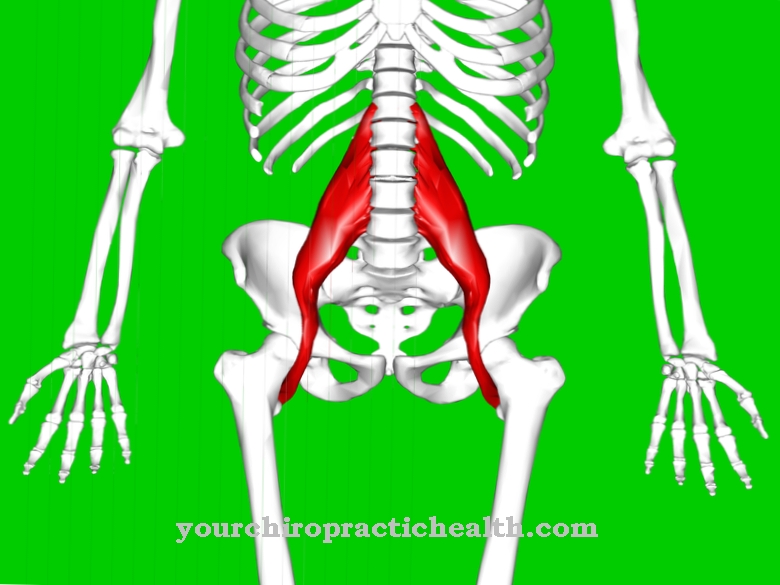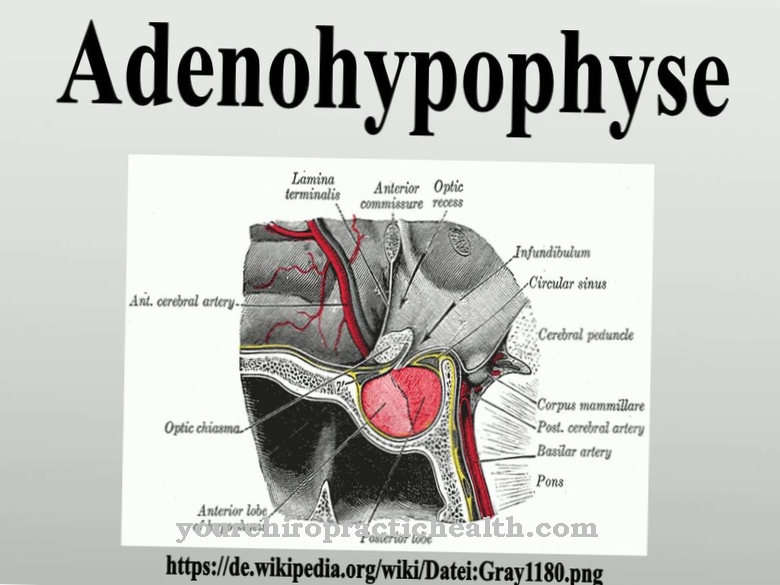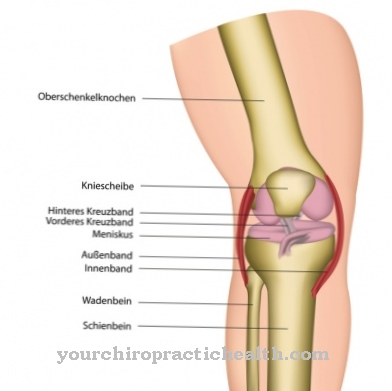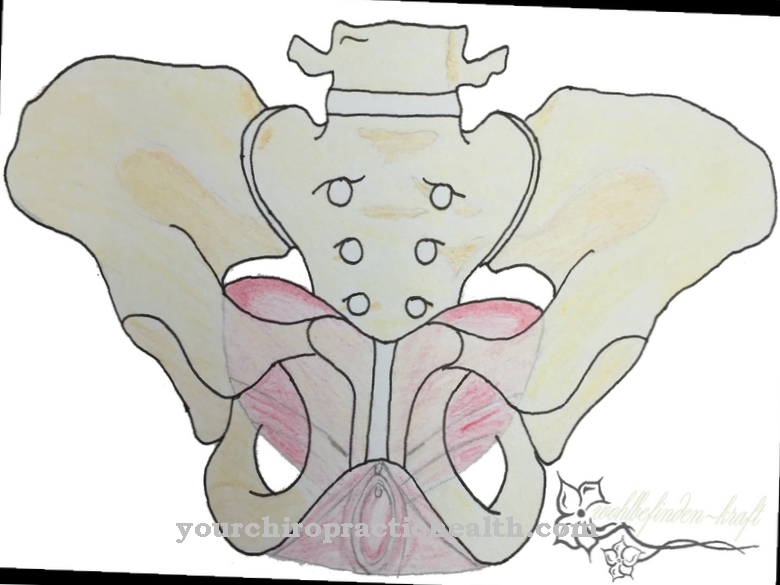The Posterior cranial fossa forms the posterior fossa. It contains the elongated medulla (medulla oblongata), the bridge (pons), the midbrain (mesencephalon) and the cerebellum (cerebellum).
What is the posterior cranial fossa?
The posterior cranial fossa is the posterior fossa of the skull. The posterior cranial fossa is adjacent to the middle fossa cranii media, which contains the temporal lobe of the cerebrum (telencephalon). In contrast, the frontal lobe of the cerebrum is located in the anterior cranial fossa (fossa cranii anterior).
These three cranial pits belong to the skull base (base cranii) and as such represent a part of the brain skull (neurocranium). The border between the fossa cranii media and the fossa cranii posterior forms the cerebellar tent, also known as the tentorium cerebelli, and a slit through which the brain stem protrudes. In the posterior cranial fossa are the elongated medulla (medulla oblongata), the bridge (pons), the midbrain (mesencephalon) and the cerebellum (cerebellum).
Anatomy & structure
The posterior cranial fossa is where nerves, arteries and veins pass through. The largest opening is the foramen magnum, which is located in the center of the posterior fossa. The elongated marrow penetrates the cranial cavity through the oval penetration point.
The spinal cord joins the medulla oblongata downwards, while in the brain it merges into the bridge. The eleventh cranial nerve (accessory nerve), the alar ligaments, and the spinal arteries and vena spinalis also run through the foramen magnum. In addition, the hard meninges (dura mater) merge into the tectorial membrane at the opening.
Next to the foramen magnum is the hypoglossal canal (Canalis nervi hypoglossi) through which the twelfth cranial nerve of the same name runs. The seventh cranial nerve (Nervus facialis), the eighth cranial nerve (Nervus vestibulocochlearis) as well as the Arteria labyrinthi and the Vena labyrinthi run through the Porus acousticus internus. The jugular foramen, from which the internal jugular vein originates, can be found below the internal acoustic porus. In addition, the cranial nerves IX-XI, the ascending pharyngeal artery, and the inferior petrosal sinus cross the jugular foramen. The condylar foramen houses an emissary vein. The posterior cranial fossa also has other, smaller openings.
Function & tasks
The posterior cranial fossa forms part of the base of the skull, which represents the floor of the skull. Inside are parts of the brain: the medulla oblongata, the pons, the midbrain, and the cerebellum. The medulla oblongata is an extension of the spinal cord that represents the transition to the brain.
From there, the human body controls vegetative functions such as breathing and circulation, but also numerous reflexes - including swallowing, vomiting and coughing. The pons interconnects nerve fibers in its core areas, which are also known as nuclei pontis. The reticular formation extends through the pons as a network of nerve cells. However, many nerve pathways run through the bridge without being switched. These pathways lead to the cerebrum and the medulla oblongata as well as to the cerebellum (cerebellum). Medicine also summarizes the elongated marrow and the bridge to the hindbrain (rhombencephalon). Together with the midbrain (mesencephalon) they represent the brain stem.
The midbrain is also located in the posterior cranial fossa. It includes the internal capsule, which includes numerous nerve tracts in the brain. The midbrain participates in the control of movement, making use of the extrapyramidal motor system. The cerebellum also deals with motor tasks and takes into account a. the posture. It also helps control the movement of the eyes. The cerebellum also participates in implicit learning processes.
Diseases
Increased intracranial pressure can cause the tentorium slit, which is located in the cerebellar tent, to pinch parts of the brain.As a result, midbrain syndrome, also known as mesencephalic syndrome, manifests itself.
Medicine divides the clinical picture into three stages depending on the severity. The symptoms of midbrain syndrome include quantitative disturbances of consciousness up to a coma, abnormal pupillary reactions, increased muscle tone and an unusually high level of reflexes (hyperreflexia). Various causes can be considered for an increase in intracranial pressure: the mass caused by a tumor, cerebral edema, a bruise (hematoma), contusion of the brain (compression cerebri) and others.
The tentorial tear often causes bleeding and can put pressure on the brain stem. Often the tear occurs as a birth trauma. The internal capsule in the midbrain can be damaged as part of a stroke caused by a circulatory disorder in the brain. Since motor nerve tracts also run through the capsula, a lesion of the inner capsule may lead to hemiparesis on one side of the body that is opposite to the damage.
Medicine summarizes a number of clinical pictures as brainstem syndromes that are caused by damage in this region. An example of a brain stem syndrome with damage to the elongated marrow (oblongata syndrome) is Jackson syndrome. Typical symptoms include paralysis of the extremities on the side of the brain lesion and paralysis of the hypoglossal nerve on the opposite side. A circulatory disorder in the vessels that supply the medulla oblongata is the most common cause of Jackson syndrome. In principle, serious damage to the brain stem can also be fatal, as it controls numerous functions that are necessary for life support. This includes breathing, for example.
























.jpg)



